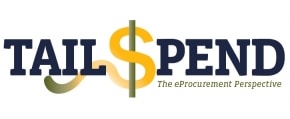
In most companies, tail spend goes unnoticed until an executive becomes irritated with excess inventory, bloated carrying costs, inflated shipping fees, or a product outage that brings down a production line. This irritation leads to the chasing of the tail syndrome where the procurement team vows to rid the factory of slow moving and obsolete inventory and commits to reworking their min-max inventory levels, but the chase ends as soon as a more important issue draws everyone’s attention to the next area in need of a fix. Tail spend quickly reverts back to normal procurement processes where the top 80% of spend is closely monitored and managed and the remaining 20% is ignored and unmanaged.
It is this unmanaged 20% of spend that is referred to as tail spend and it cost companies millions in profits every year. According to a recent white paper on tail spend from Proactis (2012), for the average company, “a 5% savings on tail spend can be the equivalent of a 10% increase in net profit.” With a hyper-focus from Wall Street on profits and from Main Street on cost savings, why does this spend mostly go unmanaged? This is due to real or perceived tail spend management challenges, including:
- Inaccurate, unreliable and fragmented data
- Tens of thousands of skus across thousands of suppliers
- Lack of tail spend ownership
- Incorrect view of low potential savings
- Lack of category expertise
- Lack of effective controls
- Little visibility / interest on the part of leadership
The above types of issues define the category of spend known as MRO. MRO spend entails low dollar value, high transaction volume, and a highly fragmented supplier base. Not an easy category to manage, but maintenance, repair and operations typically includes mission-critical spares that are required for a reliability-centered maintenance strategy. Thus, MRO spend deserves more than a chasing of the tail, event driven approach to management.
The True Value of Managing Tail Spend
So how pervasive is the chasing of the tail issue? According to a 2012 survey of conducted by HCMWorks, almost three-quarters of C-level executives in firms with revenues of over $1 billion annually reported that they had little to no visibility or insight into their firm’s indirect expenditures. Thus, even though indirect spend can represent anywhere from 20-40% of a firm’s revenue, it is commonly an “overlooked” area in the scope of procurement. (Weyn, 2012).
How can a company move from chasing to managing their tail spend? The first step is to conduct a spend analysis and bring more suppliers and more spend under active management. According to a recent study from CPO Agenda, companies today have an average of just 60.6% of their procurement outlays “under management”. When moving from chase to management mode, opportunities exist for procurement to demonstrate higher level value to the organization by contributing to the bottom line through increasing its spend under management. Research from Bartolini (2012) adds, “For every dollar that is placed under management of the procurement department, the average enterprise sees a benefit of between 6% and 12%.”
On March 1st, 2017, SDI – in partnership with Penn State’s Center for Supply Chain Research and the Hackett Group – will host a spirited forum to help procurement professionals start to address their tail spend. We’ll discuss tail spend solutions – from spend analysis and eProcurement platforms to on-site buying desks and outsourced solutions – and how they all work together.



